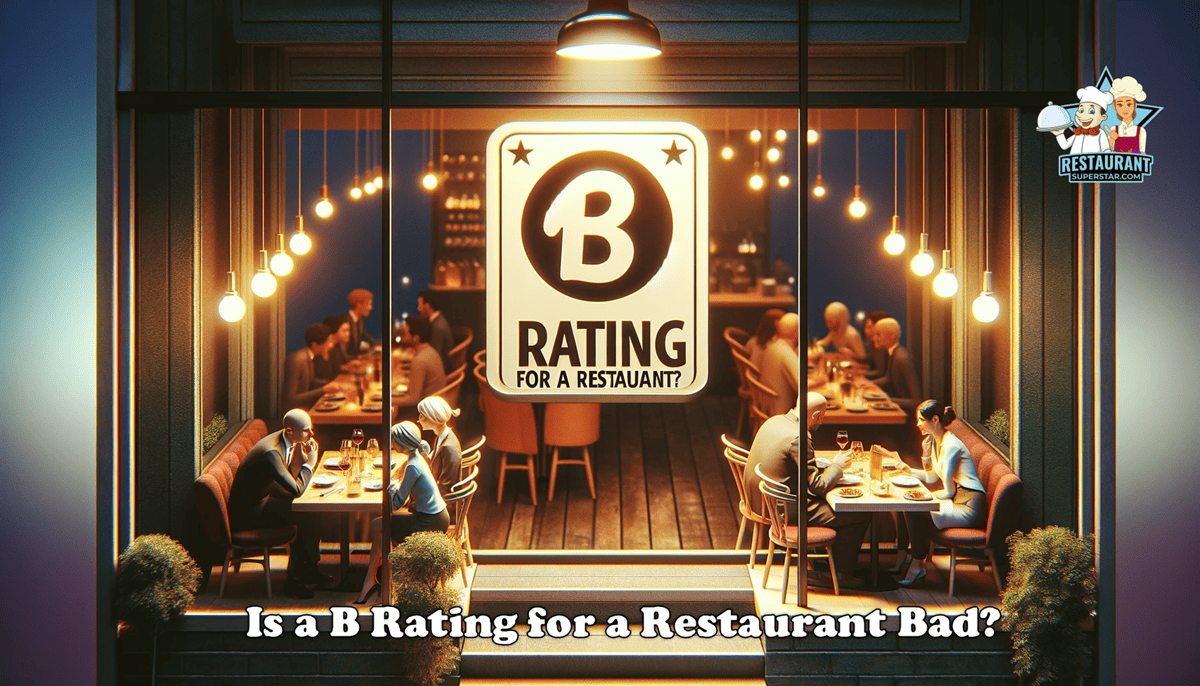Can Restaurants Charge Gratuity?
Understanding the Legal, Ethical, and Practical Aspects
You are in the right place if you’re wondering: Can restaurants charge gratuity? This vital question, along with numerous other queries, is thoroughly explored in this article.
If you’re a new restaurant owner, a young chef, or simply curious about the nuances of gratuity in the food service industry, you’ve struck gold here.
We’re about to delve deep into the legalities, ethical considerations, and practical implications of restaurant gratuities, keeping it simple yet informative.
Can Restaurants Charge Gratuity?
So, can restaurants charge gratuity? The short answer is yes, they can. Under the Fair Labor Standards Act (FLSA), restaurants in the United States are legally permitted to include a service charge, often referred to as an automatic gratuity, on customer bills.
However, this is just the tip of the iceberg. The rules and regulations surrounding gratuity charges vary widely depending on state laws, and there’s a crucial need for transparency in how these charges are communicated to customers.
Now that you have your answer let’s acknowledge that the topic of gratuity in restaurants is a labyrinth of intriguing details and surprising facts.
In this article, we will not only clarify can restaurants charge gratuity. But also dive into the ethical debates and the impact on servers and customers and explore the diverse global perspectives on this subject.
Navigating the World of Restaurant Gratuities

The topic of gratuity in restaurants is like a multifaceted gem – it’s not just about adding a few extra dollars to a bill; it delves into a world of legalities, ethical debates, and practical impacts that every restaurant professional should be aware of.
Here’s why this matters:
- Legal Landscape: Knowing whether you can legally add a gratuity charge is crucial. You don’t want to step on the wrong side of the law. Understanding the legal aspects, including federal and state regulations, helps ensure your restaurant operates within the bounds of the law.
- Ethical Considerations: This is about more than just money; it’s about people – your staff and your customers. How does automatic gratuity affect them? Does it ensure fair pay for your staff or discourage them from providing top-notch service? These are the kinds of questions we need to ponder.
- Practical Impacts: How will implementing (or not implementing) an automatic gratuity system affect your restaurant’s atmosphere and customer satisfaction? This could be the difference between a one-time diner and a regular patron.
This article will explore every nook and cranny of the question: Can restaurants charge gratuity? We’ve covered you, from the legal nuts and bolts to the ethical considerations and real-world implications.
Whether drafting your first menu or refining your restaurant’s policies, understanding this topic is key to creating a fair, transparent, and customer-friendly dining experience.
Legality of Gratuity Charges: What You Need to Know
Understanding the legality of gratuity charges is like navigating a maze – it’s complex but crucial, especially for you, the budding restaurant entrepreneurs and chefs out there. Let’s break it down:
Federal Laws and Regulations
- Fair Labor Standards Act (FLSA) Provisions: Here’s the deal – under FLSA, it’s legal for restaurants in the U.S. to include a service charge, often seen as automatic gratuity, on customer bills. But, and this is a big ‘but,’ these charges must be identified and not confused with the traditional tips we’re all familiar with. Why does this matter? Because it affects how these charges are treated for tax and wage purposes.
- Service Charges vs. Tips: Consider service charges as a fixed extra charge on the bill (kind of like a mandatory tip), whereas tips are what customers voluntarily leave based on their satisfaction with the service. The key difference? Service charges are part of the restaurant’s revenue and must be distributed to the staff. At the same time, tips go directly to the servers.
State-Specific Regulations
- Variety is the Spice of Law: Just like every state has its unique flavor, it also has its own set of rules regarding gratuity. Some states are relaxed about automatic gratuity, while others have stricter guidelines.
- Notable Examples: Let’s try some examples to spice things up. In New York, it’s common to see automatic gratuity for large groups, say parties of six or more. This ensures that servers are compensated for handling big parties. On the other hand, California has stringent laws ensuring transparency in how these charges are disclosed to customers.
Understanding these legalities isn’t just a matter of compliance; it’s about creating a transparent and fair environment for your staff and customers.
As you embark on your culinary journey, keeping these legal nuances in mind will help you set up your gratuity policies and build a fair and ethical business reputation.
Transparency in Gratuity Policies
When it comes to gratuity policies in your restaurant, transparency isn’t just excellent; it’s essential. It’s like putting the ingredients list on a menu – customers deserve to know what they’re signing up for.
Here’s how to make your gratuity policies crystal clear:
Mandatory Disclosure Requirements
- Displaying Gratuity Policies: Think of your gratuity policy as a signature dish. It must be displayed prominently – on your menus, website, and right at the entrance. Why? Because your customers should know about any automatic gratuity charges before they even sit down to order. It’s all about setting expectations right from the start.
- The Power of Verbal Communication: A personal touch goes a long way. Informing your customers verbally about the gratuity policy, especially for larger groups, can ensure the bill arrives smoothly. It’s like giving your guests a heads-up on what to expect, fostering trust and appreciation.
Service Charge Allocation
- Fair Distribution: This gets a bit technical, but stay with me. When a customer pays a service charge, that money is part of your revenue. But here’s the catch – it must be distributed fairly among your employees who provided the service. This isn’t just good practice; it’s often a legal requirement.
- Transparency with Your Team: Just like your customers, your team deserves to know how these charges are split. Clarity is critical whether it’s shared equally among the staff or based on their role. This helps maintain a happy team and ensures your service charges are handled ethically and legally.
Remember, in the restaurant world, transparency is more than just a buzzword – it’s the foundation of trust between you, your team, and your customers.
Being upfront about your gratuity policies and ensuring fair distribution sets the stage for a successful and reputable business.
Ethical Considerations: A Matter of Fairness and Perception
In restaurant management, ethical considerations are like the seasoning in a dish – they can make or break it. Regarding gratuity policies, ethics greatly influence how your restaurant is perceived and how your team feels. Let’s chew over some of these ethical aspects:
Impact on Customer Perceptions
- The Tipping Model Debate: Traditional tipping is like a vote of satisfaction – customers pay more if they’re happy with the service. But when restaurants implement automatic gratuity, it’s like taking that vote away. Some customers might see this as a loss of power to reward good service. In contrast, others might appreciate the simplicity and predictability it brings. It’s a delicate balance, and understanding your customer base is critical.
Wage Considerations for Servers
- Automatic Gratuity and Server Wages: This is where it gets a bit thorny. On the one hand, automatic gratuity can ensure a steady income for your staff, protecting them from the uncertainty of lousy tipping days. But, there’s a flip side – it could also lead to a mindset where servers feel less motivated to provide exceptional service, as their earnings aren’t directly tied to their performance. Striking a balance here is crucial for maintaining staff morale and ensuring fair compensation.
Service Quality Concerns
- Motivation and Performance: Let’s talk about the heart and soul of your restaurant – your servers. They’re the ones who bring the experience to life. When gratuity isn’t dependent on their performance, it could, in theory, lead to a drop in service quality. After all, if they will get the same gratuity regardless, why go the extra mile? This genuine concern needs to be addressed through practical staff training and motivation strategies.
Ultimately, navigating these ethical considerations is like perfecting a signature recipe – it requires thought, understanding, and a bit of trial and error.
By considering the impact of your gratuity policy on both customers and staff, you’re not just running a business; you’re nurturing a community based on fairness and respect.
Alternatives to Automatic Gratuity
Ditching the one-size-fits-all approach in gratuity can be as refreshing as trying a new cuisine. Fear not if automatic gratuity doesn’t quite suit your restaurant’s style or philosophy. There are other flavorful options to consider. Let’s savor some of these alternatives:
Voluntary Tipping Models
- Encouraging Customer Discretion: This is the classic ‘tip as you please’ method. It’s like giving your customers the chef’s knife, allowing them to decide how much to tip based on their dining experience. This model can create a more personalized connection between servers and customers, potentially leading to better service and happier diners. Plus, it keeps the traditional spirit of tipping alive – a reward for stellar service.
Suggested Gratuity Ranges
- Balancing Flexibility and Guidance: If you’re worried about leaving your customers bewildered with the open-endedness of voluntary tipping, suggested gratuity ranges can be a middle path. It’s like offering a menu with recommended pairings – not mandatory, but helpful. This approach gives customers a guideline (say, 15%, 18%, 20%) while still leaving the final decision in their hands. It’s transparent, user-friendly, and takes away the awkward guesswork.
Fair Wage Approach
- Beyond Tips for Fair Compensation: Here’s a thought – what if your staff didn’t have to rely on tips to make a decent living? Paying servers a fair base wage is like putting a solid foundation under your restaurant. It ensures your team earns a stable income, regardless of slow business days or stingy tippers. This approach can also attract top talent who prefer the stability of a consistent paycheck. However, it might mean tweaking your menu prices to cover the costs, so it’s a balancing act.
Each of these alternatives has its unique flavor and must be chosen based on what best suits your restaurant’s culture and customers‘ preferences.
It’s about finding that perfect recipe for a gratuity policy that feels right for your establishment.
Global Perspectives and Additional Points
Exploring gratuity practices around the globe is like taking a culinary world tour. Every region has its unique flavor and approach.
Understanding these differences not only broadens your perspective but can also offer fresh insights into your own restaurant’s policy.
Let’s pack our bags and take a quick global tour:
International Practices
- Australia’s Ban on Automatic Gratuity: Automatic gratuity is off the table in Australia. It’s a no-go. Why? Because they prefer a more straightforward approach where service charges aren’t automatically added to bills. This fosters a culture where tipping is seen as a genuine token of appreciation, not an obligation. It’s a whole different dining culture down under, where the emphasis is more on fair wages than reliance on tips.
- Diverse Tipping Cultures: Each country has its tipping etiquette. In Japan, for example, tipping isn’t customary; it might even be considered rude. But if you hop over to the USA, tipping is almost a ritual deeply ingrained in the dining experience. This diversity is crucial, mainly if your restaurant caters to international customers.
Ongoing Debate
- The Global Conversation: The world hasn’t agreed on the ‘perfect’ tipping model, and that’s okay. It’s an ongoing conversation, evolving with changing social norms and economic realities. Some argue for the simplicity and fairness of automatic gratuity, while others champion the personal touch of voluntary tipping.
- Learning from Differences: You can pick up valuable insights by examining how different cultures handle gratuity. Adopting Australia’s emphasis on fair wages or embracing the American way of incentivizing exceptional service through tips. The key is finding what best aligns with your restaurant’s ethos and customer expectations.
This whirlwind tour of global gratuity practices shows us one thing – there’s no one-size-fits-all solution. It’s about understanding the cultural context, legal frameworks, and what makes sense for your restaurant and patrons.
Deeper Dive: Further Impacts of Restaurant Gratuity Charges
A closer look at the impacts of gratuity charges in your restaurant is like peeling an onion. There are many layers, and some might make your eyes water. Understanding these layers is essential, as they affect everyone involved in the dining experience, from your servers to your customers. Let’s dive in:
Impact on Servers
- Income Stability vs. Higher Earnings: Automatic gratuity can be a safety net, providing servers with a predictable income. But it’s a double-edged sword. While it offers stability, it also caps their potential earnings, removing the incentive for exceptional service that could lead to higher tips.
- Motivation and Morale: How your team feels about their job is crucial. An automatic gratuity system might lead to a ‘just another day at the office’ mindset, potentially dampening the enthusiasm from earning tips for excellent service. On the other hand, it can relieve the stress of unpredictable earnings.
- Tax Implications: Here’s a less talked about aspect – taxes. Tips and service charges are often taxed differently. This can significantly impact your servers’ take-home pay, and being upfront about these differences is key to maintaining trust and transparency.
Impact on Customers
- Choice and Transparency: For customers, the freedom to tip is powerful. It gives them a voice in their dining experience. Automatic gratuity takes away this choice, which can be off-putting for some. Clear communication about how and why gratuity is charged is vital to maintaining trust.
- Cultural Differences: Remember, not everyone comes from a tipping culture. For some international customers, the concept of gratuity might be unfamiliar or even uncomfortable. Being sensitive to these differences and ready to explain your policies can enhance the dining experience for everyone.
Potential for Abuse
- Inflated Charges and Unfair Practices: This is a tough one. Some restaurants might be tempted to set high service charges, leading to customer backlash and a tarnished reputation. Equally important is how these charges are distributed among your staff. Unfair distribution can lead to internal conflicts and a demotivated team.
Understanding these impacts is crucial for making informed decisions about your restaurant’s gratuity policy. It’s not just about what’s legal or accessible – it’s about creating a fair, enjoyable, and sustainable environment for your team and customers.
Exploring Alternative Solutions: Thinking Outside the Tip Jar
In the ever-evolving world of the restaurant industry, being open to alternative solutions is like adding a new dish to your menu – it can be exciting and refreshing. When it comes to gratuity, there are several innovative approaches you can consider. Let’s explore some of these game-changers:
Living Wage Model
- Pros: Imagine a world where your staff relies on something other than the uncertainty of tips to make ends meet. A living wage model does just that – it ensures your employees receive a fixed, reliable wage. This can increase staff satisfaction, lower turnover, and improve service since employees feel more valued and secure.
- Cons: Moving to a living wage model might mean higher operating costs. This could increase menu prices, which may only sit well with some customers. Plus, some servers might need to catch up on the potential for higher earnings through exceptional service.
Service Level Pricing
- Differentiated Pricing for Different Experiences: Consider this a tiered menu with different service levels and price points. For example, full table service could be higher than counter service, with gratuity built into the cost. This approach offers transparency and choice for customers, allowing them to choose the level of service they prefer.
- Flexibility and Clarity: It can provide clarity and simplicity for customers, as they know exactly what they’re paying for. Plus, it allows you to tailor your service (and pricing) to different customer needs and preferences.
Technology in Tipping
- Digital Platforms Revolutionizing Tipping: In the digital age, why not digitize tipping? Implementing technology like touch-screen payment systems or mobile apps can modernize the tipping experience. These platforms can offer suggested tip amounts or fun, interactive ways for customers to tip, making it a seamless part of the dining experience.
- Enhanced Customer Control and Insight: With digital tipping, customers get more control over how much they tip, and you get valuable insights into their tipping behaviors. This data can help you understand customer satisfaction and server performance, leading to better management decisions.
Exploring these alternatives can offer a fresh perspective on gratuity and service in your restaurant. It’s about finding the blend that resonates with your business philosophy, team’s needs, and customer expectations.
Looking Ahead: The Future of Gratuity in the Restaurant Industry
Peering into the future of gratuity in the restaurant world is like trying to predict the next big culinary trend – it’s exciting, a bit uncertain, but full of possibilities.
The tipping and service charges landscape is evolving, influenced by technology and shifting societal norms. Let’s explore what the future might hold:
Technological Evolution
- Redefining Tipping with Tech: Imagine a world where tipping is a tap away on a smartphone or integrated seamlessly into a digital dining experience. Technology is set to revolutionize tipping models, making them more intuitive, personalized, and fun.
- Greater Transparency and Efficiency: Digital platforms can offer more apparent breakdowns of how tips are distributed, potentially increasing trust and satisfaction among both customers and staff. Plus, these systems can streamline the process, making it quicker and more efficient.
Ethical and Consumer Trends
- The Ethical Shift: There’s a growing conversation around fair wages and the ethical implications of tipping. More and more, customers and workers are advocating for equitable pay practices, which could lead to significant changes in how restaurants approach gratuity.
- Adapting to Consumer Expectations: As customer preferences evolve, so must restaurant practices. We might see more establishments moving towards inclusive pricing models or experimenting with no-tipping policies to align with consumer trends.
- Potential Regulatory Changes: With these shifts, we can also expect changes in regulations surrounding gratuity and service charges. Staying informed and adaptable will be essential for restaurant owners and operators.
The future of gratuity in the restaurant industry is flexible. It’s an exciting, dynamic field that combines tradition with innovation.
As new trends emerge and technology advances, how we think about and handle tipping is bound to evolve.
For restaurant professionals, being open to change and responsive to these trends will be crucial in navigating this future landscape.
As we wrap up our exploration of restaurant gratuity charges, remember that the key is finding a balance that works for your business, team, and customers. The future is yours to shape.
Conclusion
As we reach the end of our culinary journey into the world of restaurant gratuities, it’s clear that this topic is as layered and complex as a well-crafted lasagna.
From navigating the legal intricacies of the Fair Labor Standards Act to understanding diverse state regulations, the legality of gratuity charges requires careful consideration and constant attention.
But legality is just one part of the story. The ethical implications of automatic gratuity – how it affects your staff’s motivation, the quality of service they provide, and the perceptions of your valued customers – add another dimension to this multifaceted issue.
Balancing these ethical considerations while ensuring a practical, profitable business model is no small feat.
Then there’s the practical side – finding a gratuity model that aligns with your restaurant’s ethos and resonates with your customers.
Whether sticking with the traditional voluntary tipping, exploring suggested gratuity ranges, or pioneering a living wage model, your choices will shape your dining experience.
As we look to the future, the evolving role of technology and shifting consumer trends suggest that the world of restaurant gratuity is far from static.
Staying informed, adaptable, and open to new ideas will be vital to navigating these changes.
In summary, the world of restaurant gratuities is a delicate balance of legality, ethics, and practicality.
Understanding and navigating these aspects is crucial for new restaurant owners, young chefs, and all those involved in this vibrant industry.
It’s not just about adding a service charge to a bill; it’s about creating a fair, transparent, and enjoyable dining experience for everyone involved.
So, as you move forward in your culinary endeavors, remember to keep these considerations in mind. After all, the secret to a successful restaurant isn’t just in the recipes you cook up; it’s also in the policies you serve.
Jeff Smith is a Restaurant Consultant with over 20 years of hospitality experience ranging from server to owner and general manager. He focuses on Restaurant POS technology as well as restaurant marketing. Check out our world-famous restaurant resources page for a comprehensive offering of hand-picked resources and tools to help your business. You can also check out some of our other restaurant business articles.




